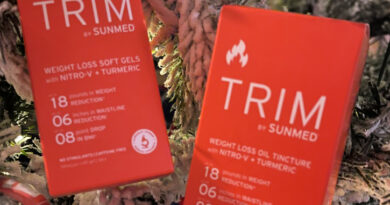Breastfeeding Guide for First Time Moms
Childbirth is a beautiful experience and a blessing that will change your life considerably. If you’re expecting for the first time, you probably have several questions and need some reassurance. The first year after giving birth is going to be full of challenges but also a time where you will form an unbreakable bond with your newborn and get to know your own body better than ever. This will be your own path to finding your inner-self, but it helps to learn from the experience of others.
Starting Out As Soon As Possible
If you are a Mommy-to-be, be prepared to start breastfeeding a few hours after giving birth to your newborn. Don’t worry about getting it right straight away just be confident and let your natural instincts take over. Midwives will be there to guide you through, and you can get additional advice by talking to a lactation consultant.
While trying to breastfeed for the first time, one of the mistakes first-time moms tend to make is to insert only the nipple into their baby’s mouth. This way your baby won’t be able to latch on properly making it a painful experience for you. To avoid having cracked and bleeding nipples, you’ll want to make sure that your baby is latching onto the entire nipple area, including the areola ensuring he has a good flow of nutrients coming his way and making the whole process much less uncomfortable for you.
The first couple of weeks are going to be challenging there’s no doubt about it but make sure to stick with it, be confident in yourself and soldier on.
The reason it’s important to breastfeed your child as soon as possible is to establish familiarity and a bond that will stimulate your body to start the production of breast milk. In the first few days, your body is not producing regular breast milk, but instead, a somewhat clear liquid called Colostrum.
Colostrum is generated prior to giving birth and contains important antibodies to protect our fragile newborns and boost their immune system. If you’re struggling, don’t give up, be patient and give yourself at least 2 months to adjust to breastfeeding.
The Let-Down Reflex
The nipple contains special receptors that detect and alert your body to start expressing milk when you begin nursing your baby. This is also called the let-down reflex. The let-down occurs about two minutes after your baby starts sucking, but it can also be triggered by your baby crying or just thinking about your hungry little guy.
Your brain produces a hormone named oxytocin that signals the tiny muscles around your mammary glands to contract and extract milk into the lactiferous ducts. So while suction helps it is not the main reason why the let-down occurs.
You might feel a tingly, warm sensation in your chest area, this is perfectly normal, and it’s just milk flowing into the ducts and in your baby’s mouth. You will want to assist your body by relaxing, focusing on your child and reducing all other distractions.
When Is The Ideal Time To Feed Your Baby?
Creating a perfect feeding schedule might sound practical but is not really feasible. Instead, try looking for clues and signals and feed your baby whenever he’s actually hungry. Typical signals would be lip licking, sucking his hands, head bobbing and, the most obvious one, crying.
If you manage to spot the first three on time the feeding process will be much calmer and relaxed, than if you’re too late and your child is already bursting into tears. In the early stages, your newborn will seem to be constantly hungry. Don’t worry, this is completely normal, breast milk is easily digestible so don’t hesitate to feed him frequently.
Staying Hydrated And Maintaining a Well-Balanced Diet
Adequate daily fluid intake is key to helping your body produce enough breast milk for your hungry little munchkin. Always make sure you’re well-hydrated by having a water bottle that’s filled to the brim by your side at all time. Also, drinking water while you’re starting to breastfeed might encourage your let-down happening earlier.
Another good source of liquids is eating fruits or drinking freshly squeezed juices. Contrary to popular belief, it is completely safe to drink coffee as long as you don’t overdo it. Your limit should be around 300 milligrams daily, according to experts.
Eating is also important because you’ll be burning calories like crazy, especially in the first few months. While you don’t need to eat anything specific, a healthy and well-balanced diet will help you produce more milk and give you the much-needed strength and stamina.
Trying Out Different Breastfeeding Positions
Finding the right position for you is important since it will help your baby latch on properly while making the whole experience much more comfortable for you. You want to avoid having bad posture so don’t bend over your baby, instead take a position where you bring the baby to you. Sitting in a relaxed and comfortable posture will substantially help with the let-down reflex occurring faster and more easily. Also, it won’t strain your body as much.
Even if you found the perfect position that suits you and your baby, try mixing things up and swapping for another one from time to time. Changing your breastfeeding position helps drain more milk from different areas and prevents your lactiferous ducts from getting blocked.
The most popular and traditional position is the “Cradle Hold” – While sitting up straight, put one arm under your baby and use your other arm to hold her head and support her neck. The key here is to tilt your newborn’s entire body, so it’s facing towards yours, not just the head.
It is recommended to use a pillow and put it under your baby in order to bring it closer to your breasts and avoid bending. Putting a pillow in your lap will also be comfortable for your hands and is especially useful in the first few weeks while your child is very small.
Breast Pumps And How To Use Them
If you are at the stage of considering going back to work, but you want to continue nursing, you could resort to using a breast pump. This way your child will have your milk on demand even if you’re not at home. It’s a great way to give yourself a much-needed break and include Dad into the feeding process.
Using a breast pump will also encourage more milk production and will relieve you of any built up pressure. These devices come in all shapes and sizes, but the top rated breast pumps are either manual or electric. Using them is pretty straightforward, all you have to do is place the breast shield – the plastic part that is designed to cover the nipple – on your breast and start pumping, or if it’s an electric model just turn it on and leave it.
These devices usually come with some kind of storage container, typically a small pot or a spare bottle. Since the previously mention let-down reflex occurs in both of your breasts, you could use a breast pump simultaneously while feeding your newborn.
Taking Care Of Yourself
Breastfeeding by itself comes with a lot of health benefits like lowering the risk of cancer, healing faster after childbirth, returning to your original weight and then there is the emotional satisfaction and the bond you create with your newborn.
However, there are going to be days where it will be so difficult that you will want to throw in the towel completely. To take care of your child and provide him with much-needed nutrients, you need to remember to take care of yourself first. Get enough sleep, take in sufficient calories, don’t forget your vitamin supplements and just relax. Being a mom might be weary and stressful at times, but it gives so much purpose and happiness in return.









